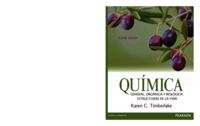Biomass Sugars for Non-Fuel Applications
59 Visitas | 55 Descargas | 2017-02-14 07:10:05 | raulito
Descripción
The search for a sustainable source of chemicals as alternatives to petroleum has led to the discovery of multiple routes for renewable biomass conversion into biofuels and value-added platform chemicals. Extensive research in this area has been focused primarily on the diversification of energy resources. In fact, the amount of biomass available currently is too limited to address all the demands with respect to fuels. Thus ca. 30% of the global arable land is needed to cover only 10% of the global fuel demand by 2030. It should be noted that currently the majority of oil is used for the production of fuels, while only 5–8% (5.8 in 2012) of a crude oil barrel is used in the manufacture of chemicals, while the turnover in monetary value is almost the same for fuels and chemicals. Since the price of fuels is much lower than for chemicals, in the future, limited resources should be used mainly for chemicals, while the growing energy demand must be compensated for by alternative energy sources (solar, hydropower, nuclear, etc.). The major components of lignocellulosic biomass are cellulose (40–50%), lignin (16–33%) and hemicelluloses (15–30%), where the last two are practically built up of sugar units. Therefore, biomass is a rich feedstock for the various sugars and their derivatives. Sugar derivatives were considered as the top twelve value-added chemicals from biomass by the U.S. Department of Energy (2004). Extensive research was performed to advance the technology of cellulosic biomass transformation into biofuels. However, sugar-based chemicals are also a green and feasible source for the sustainable manufacturing of a variety of valuable products including polymers, surfactants, pharmaceuticals, and others.
Detalles
| Autor(es): |
Dmitry Murzin and Olga Simakova |
| Tamaño: | 7.02 MB |
| Categoría: | Química |
| Etiquetas: |
Otros Libros de "Química"
Contribuir
Usted puede contribuir con Libros UCLV, es importante para nosotros su aporte..
Contribuir


